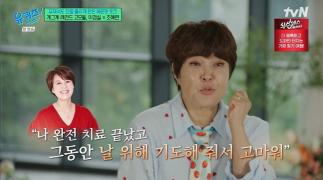In the past, mental illness misconception epilepsy is an acquired disease...Any symptoms?
Jul 25, 2025
|
Epilepsy is a condition called `interstitial' in the past. It is a chronic nervous system disease in which seizures occur repeatedly even without specific triggers, and brain nerve cells are excessively excited, causing instantaneous electric signal congestion, resulting in abnormalities in exercise, sensation, consciousness, and mental function.
Professor Choi Yun-ho said, "Estromia has been mistaken for a mental illness in the past or has been negatively recognized, but since 2014, the name has been changed to "Estromia" in the law, and the awareness has been improved."There is a misunderstanding that it is an innate disease, but it can occur to anyone naturally and can live a daily life sufficiently through treatment," he said.
The main symptom of epilepsy is a major attack.
With general convulsions, consciousness is lost, bubbles form in the mouth, or urination may be accompanied. However, local seizures are more common in most adult patients. Local seizures begin in certain areas of the brain. Symptoms such as twitching of limbs or parts of the face or blinking eyes are repeated. Some unconsciously show 'automatic behavior', such as changing their taste or touching their hands.
The diagnosis checks the presence or absence of abnormal brain waves through an electroencephalogram, and determines the presence or absence of structural lesions through brain MRI. In particular, listening to the patient's medical history is important, so it is helpful to organize the situation, symptoms, duration, and aftereffects at the time of seizure with statements from guardians or witnesses. Brain waves during sleep, video brain waves monitoring, and the like may be performed for a more precise diagnosis. If necessary, genetic or immunological tests may be performed in parallel to determine the cause.
Professor Choi Yun-ho said, `If you have had a single attack, you must seek special treatment"Especially when repeated or accompanied by changes in consciousness, early diagnosis has a decisive effect on prognosis."
Treatment is based on medication. If seizures appear more than once without any specific cause, start taking anticonvulsants. Drugs alone can control symptoms in about 70% of all patients. Recently, various mechanisms of anti-epilepsy drugs have been developed, and customized prescriptions can be made depending on the form of seizures or accompanying diseases.
If the seizure is not controlled even after medication for more than two years, it is diagnosed as refractory epilepsy. In this case, surgical treatment is considered. Surgery is performed by finding and resecting lesions through brain imaging and long-term EEG analysis. If the surgery is difficult or the effect is limited, brain nerve stimulation treatments such as VNS, deep brain stimulation (DBS), and responsive brain stimulation (RNS) can be an alternative.
Professor Choi Yun-ho said, `Estromia is a disease that can affect the whole life, but if early diagnosis and constant treatment are made, we can maintain a sufficient daily life"When social understanding and interest in patients is added, the effectiveness of treatment can also be higher."
|
This article was translated by Naver AI translator.















